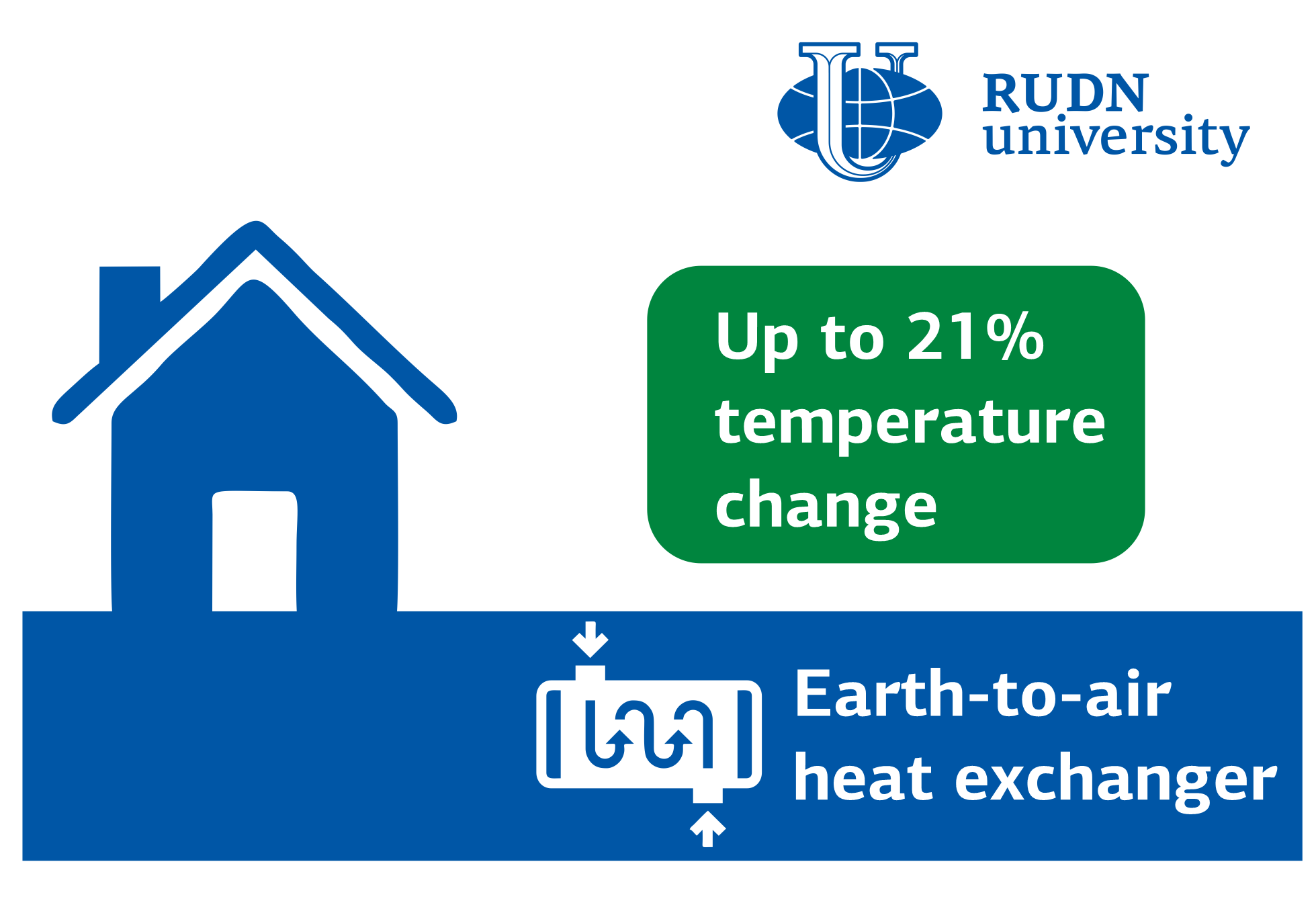RUDN engineer propose a green split system in houses using ground warmth
The residential sector consumes a third of the energy produced and emits almost a third of all carbon monoxide into the atmosphere. Therefore, it is important to optimize the energy consumption processes in homes, in particular, air cooling systems. One possible approach is to use ground-to-air recovery systems, or ground collectors, instead of air conditioners. This is a house “breathing” system, in which air from the street enters pipes buried in the ground. Due to the temperature difference, the air underground cools in hot weather and heats up in cold weather, and then enters the room. A RUDN engineer with colleagues from Iran has developed a new model of a soil collector, which allows maximizing energy benefits.
“Low-carbon and renewable energy sources can reduce air pollution. One of the effective strategies in this direction is geothermal energy. It is affordable, does not pollute the environment and can play an important role, for example, in heating or cooling rooms. Ground-to-air recuperation is considered passive heating. In this system, the pipes are buried underground to a depth of
2-3 m. The pipes absorb heat from the soil and transfer it to the outside air by natural convection to meet the needs of the buildings. In addition, this method helps to reduce noise pollution,” Esmail Lakzian, PhD, researcher at the RUDN University.
The engineers proposed a model with a new pipe geometry. Steel pipes with a diameter of 15 cm are arranged in a “snake” at a distance of 50 cm from each other. RUDN researchers performed computer calculations and ran the model in test mode to check the energy performance. The work of the model was tested on the example of Mashhad, the second largest city in Iran.
Depending on the thermal conductivity of the soil, the outlet temperature is reduced by
“The proposed serpentine ground-to-air recuperation geometry gives good system performance. It has shown applicability to the steppe climate of Mashkhad and will suit other similar climatic conditions around the world,” Esmail Lakzian, PhD, researcher at the RUDN University.
The results are published in Sustainable Energy Technologies and Assessments.
Sergey Ivanov, a scholar from St. Petersburg, has been named the first winner of RUDN University’s International Prize for Scientific Achievements in Mathematics, worth 5 million rubles.
Products derived from microalgae represent a cutting-edge development in the field of bioeconomy. The potential of this biological resource was discussed at the international research seminar “Foundations for a Green Sustainable Energy”, part of the BRICS Network University’s thematic group on “Energy”. The event was organized by the Institute of Ecology at RUDN University.
Ambassadors of Russian education and science met at a conference in RUDN University to discuss how they can increase the visibility of Russian universities and research organizations in the world, and attract more international students in Russia.
